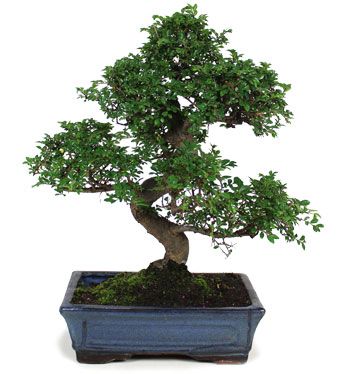Characteristics
It is a semi-deciduous tree well known for its small leaves and characteristic bark.
Location
In Mediterranean climates, place outdoor in direct sunlight all year round. In colder climates it may lose its leaves, making it a deciduous tree. The leaves will blossom again in Spring.
Watering
Plenty of water during the summer months and moderate in Spring.
Fertilization
From Spring to Autumn.
Re-potting
Every 2 years when it begins to blossom.
Substrate
100% Akadama or mixed with 20% of volcanic clay.
Pruning and pinching
Pruning
Pruning can be done early Spring.
Pinching
Should be done during its growing period. When the new branch has 6 to 8 new pairs of leaves use tweezers to cut 2 pairs.
Wiring
From Spring to Autumn
Curiosities
Elm wood is very resilient when kept constantly in water and due to this property it is used to build boats, bridges, dams, outdoor stages and general carpentry. It is because of this resilience that Colbert the famous French statesman, when working for Louis XI, had the idea of planting elms alongside all the roads in France so they would always be ready to build a naval fleet (unfortunately elm wood is not used anymore to build boats). Nowadays, the elm population has decreased due to Dutch elm disease. Fortunately the species Ulmus parvifolia is not affected by this disease.

